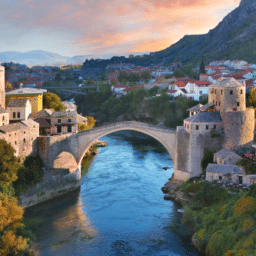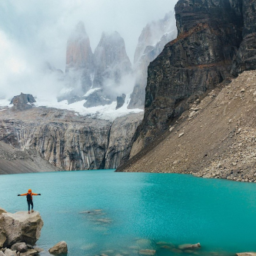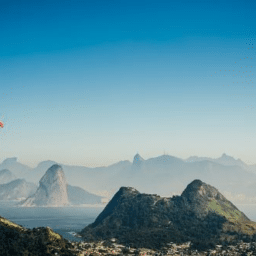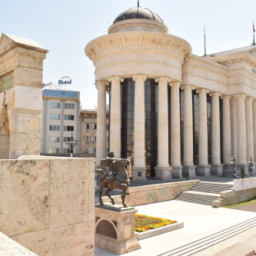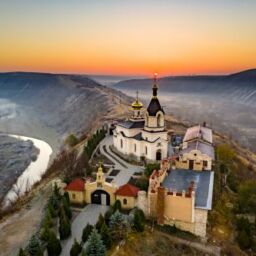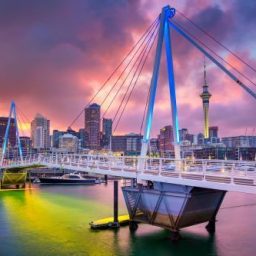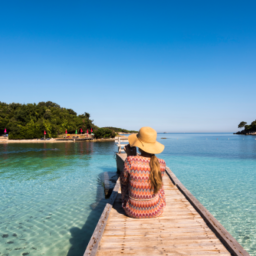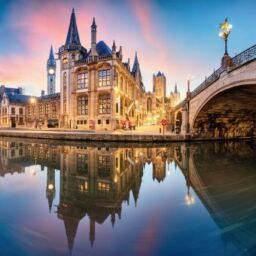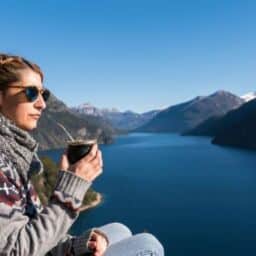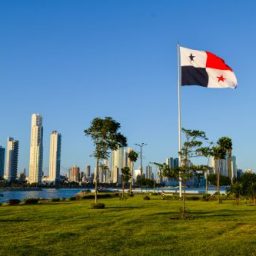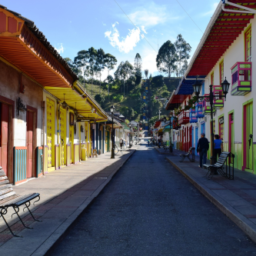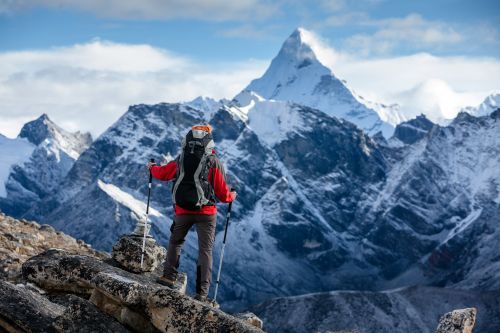

Nepal is a mysterious and inaccessible part of the world, significantly different from everything we are used to in the West. A trip to this country will allow you to discover extraordinary mountain landscapes, world-famous monuments, and the rich culture of the Nepalese people.
In today’s article, we’ll cover everything you need to know before travelling to Nepal. We will discuss not only the languages spoken by its inhabitants but also the most important geographical facts, the top-rated tourist attractions, and useful tips for travellers.
Nepal – essential information
The Federal Democratic Republic of Nepal is a small country in South Asia, bordered by China to the north and India to the east, west, and south. The capital city of Nepal is Kathmandu. Its current population is estimated at 30 million people.
Administrative divisions of Nepal
The country of Nepal is changing and developing dynamically. The first level of the country subdivision are the provinces defined by the new constitution. Provinces are further divided into districts, each governed by the District Coordination Committee.
Geography of Nepal
Due to its diverse geography, Nepal is one of the least urbanized countries in the world. As much as 80% of the country’s area is mountainous, with the Great Himalayas making up the northern part of Nepal. It contains the highest peak in the world, the famous Mount Everest, and seven other peaks measuring over 8 thousand meters above sea level.
Parallel to the High Himalayas is the Pahad region of the Lower Himalayan Range with numerous valleys (including the largest, the Kathmandu Valley). The lowland region along the southern border is called Terai, characterized by tall grasslands, sal forest, and scrub savannah. It is part of the Terai-Duar savanna and grasslands ecoregion. The country has five climatic zones and experiences five seasons. The main rivers of Nepal are Karnali, Kosi, and Narayani. Nepal is a landlocked country.
History of Nepal
The earliest inhabitants of the area of present-day Nepal were Indian and Tibetan tribes. In the third century BC, they were conquered by Ashoka the Great of the Maurya Empire, a propagator of Buddhism. After the fall of the Maurya dynasty, Nepal came under the influence of Tibet.
In the 13th century, the local Malla dynasty took over and introduced a strict caste system. The most famous ruler of this family was Jayasthiti Malla, who managed to introduce widespread socio-economic reforms. In the 15th century, Malla princes divided the country into four states: Banepa, Kathmandu, Bhadgaun, and Patan. The fierce rivalry between them led to the flourishing of art and architecture, but also to the fall and reunification of the country in the late 18th century. In 1769 Prithivi Narayan Shah managed to conquer the Kathmandu Valley and significantly expanded Nepalese control over the bordering territories. The dispute with Tibet over the mountain passes and inner valleys led to the military intervention of China.
Shortly after that, Nepal began to compete with the East India Company for border territories, which led to the outbreak of the Anglo-Nepali War in 1814. The war was won by the British, and Nepal ceded some of the conquered territories. In the mid-19th century, the king was reduced to a representative role, and the actual power in the country was held by the prime minister, whose office became hereditary. Jung Bahadur Kunwar, a popular military leader, became the prime minister and founded the Rana dynasty. Their rule was characterized by tyranny, economic exploitation, and debauchery. Rana worked closely with the British and received some of the border lands from them for providing military assistance during the Indian Rebellion.
In the late 1940s, with the support of India and the cooperation of the king, the Nepali Congress overthrew the Rana dynasty and established parliamentary democracy. A period of power struggle between the royal family and the government began, leading to the establishment of a partyless political system. The multiparty was established in 1990.
On February 13, 1996, a civil war broke out between the Maoists and the government, and the political situation was further destabilized by the massacre in 2001 when King Birendra’s son, Prince Dipendra, shot his parents and six other members of the royal family and committed suicide. The throne was inherited by King Birendra’s brother, Gyanendra. The monarchy was finally abolished in late 2007 and the first elections were held in April 2008. The new constitution of Nepal was promulgated in September 2015. The same year, an earthquake killed over seven thousand people.
Politics and government
Nepal is a parliamentary republic with a multi-party system, governed according to the Constitution. The current president (since March 13, 2023) is Ram Chandra Poudel. The Prime Minister is Prachanda (Pushpa Kamal Dahal), who took office for the third time on December 26, 2022. The Constitution does not guarantee the full independence of the judiciary.
Economy
Nepal is one of the least developed countries in the world, mainly due to natural conditions that isolate the country and are not conducive to the development of agriculture. Agricultural land covers 17% of the country’s area and is unevenly distributed, with the largest part of it located in the Terai region. The first industrial plants began to appear only in the 1930s, currently the main branches of industry are the wood, tobacco, and sugar industries. Nepal also has significant but still poorly explored mineral deposits. At the turn of the 20th and 21st centuries, Himalayan tourism services began to appear on a large scale, and it still generates significant revenue today.
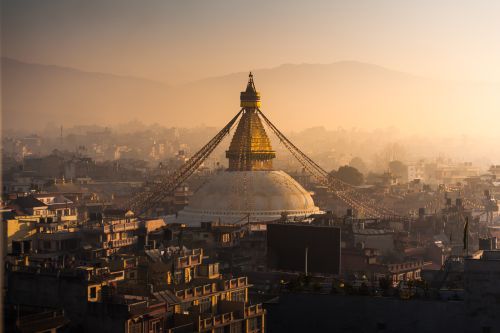
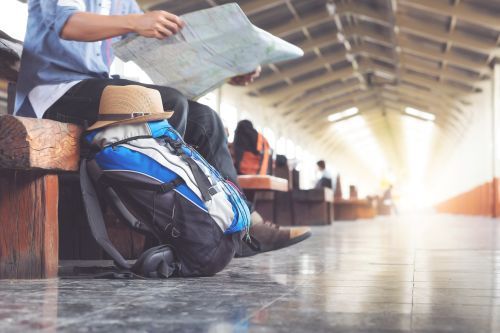
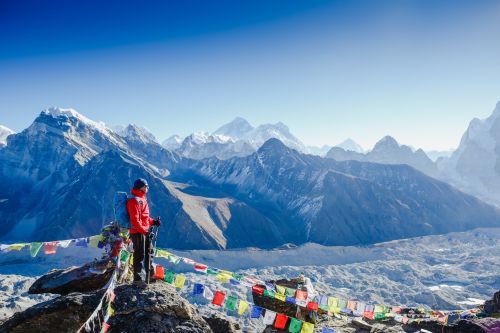
Languages of Nepal
What languages are spoken in Nepal? The answer is not as simple as it seems to be – according to the report of the National Language Commission from 2019, as many as 129 languages have been recorded in Nepal!
Nepali language
Nepali is the official language of Nepal. It belongs to the Indo-Aryan group of the Indo-European language family and is the native language of over 17 million people, of whom over 11 million live in Nepal (which makes up 44.5% of the country’s population). The rest of the Nepali speakers live mainly in Bhutan, India, and Myanmar. Nepali is written in Devanagari, an alphabetic and syllabic script composed of 46 characters. This system is also used to write Hindi and Sanskrit.
Basic phrases in Nepali
If you are interested in the Nepali language, check out a handful of useful words and phrases along with their simplified pronunciations.
हो, हुन्छ [ho/hunchha] – yes
होइन, हुँदैन [hoina, hudaina] – no
नमस्कार/नमस्ते [namaskar/namaste] – hi
शुभ प्रभात [shuva pravat] – good morning
शुभ दीन [shuva diin] – good afternoon
शुभ साँझ [shuva saanjh] – good evening
शुभ रात्री [shuva ratri] – goodnight
बिदा हौ [bidaa hau] – goodbye (formal)
फेरी भेटौँला [pheri bhetaula] – goodbye (informal)
धन्यवाद [dhanyabad] – thank you
केही छैन [kehi chhaina] – you’re welcome
क्षमा गर्नुहोला/क्षमा पाउ [kshama garnuhola/kshama pau] – sorry
यो मैले बुझ्न सकिन। [yo maile bujhna sakina] – I don’t understand
मेरो नाम… हो [mero naam… ho] – My name is…
Other languages in Nepal
Most of the other languages in Nepal belong to one of four language families: Indo-European, Sino-Tibetan, Austro-Asiatic, or Dravidian. Unfortunately, many are threatened with extinction, because only 19 out of 129 are languages spoken by more than 100,000 people. The second most spoken language after Nepali is Maithili, which is used by over 11% of the population, mainly in the Terai region. The next most popular languages are Bhojpuri, Tharu, and Tamang – each of them is spoken by more than 5% of Nepalese.
There are also several sign languages in Nepal – in addition to the national sign language, in some places the deaf communities use the indigenous sign languages: Jhankot, Jumla and Ghandruk.
English in Nepal
Almost everyone who plans a trip abroad hopes that they will be able to communicate with its inhabitants in English. Fortunately, almost every Nepalese knows at least a few basic words in English, especially in the most touristy parts of the country, for example in the Kathmandu Valley. Therefore, you can feel safe when planning your trip across Nepal. However, you should still consider learning a few useful phrases in Nepali and check the language skills of your trekking guide before you decide on his services – just to stay on the safe side.
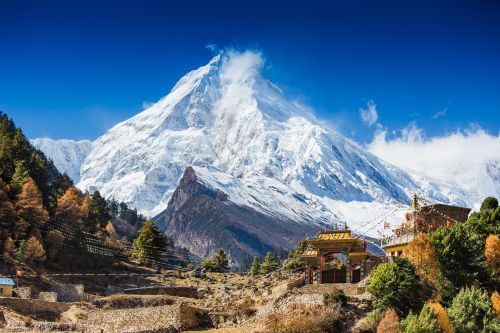

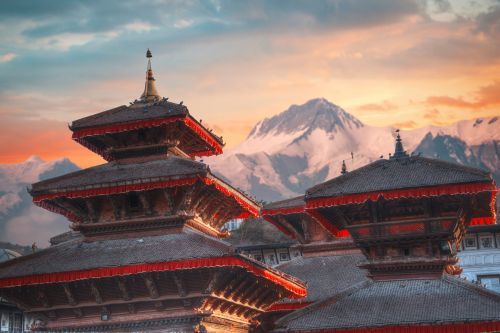
Useful information for travelers
Are you planning a trip to Nepal? Don’t forget to read the important travel information.
Visa and necessary documents
Tourists travelling to Nepal are required to have a visa. It can be obtained at the Embassy of Nepal or at one of the border points. In both cases, you must fill the appropriate form on the website of the Nepal Department of Migration in advance. Some countries are not eligible for Visa On Arrival, so read the rules on the Department of Immigration website carefully before travelling. Depending on the length of your stay, the visa fee ranges from $30 to $125, from which children under the age of ten are exempt (except for USA citizens).
In addition to the visa, travellers must have a passport that is valid for at least another six months and has at least two blank pages. You cannot cross the Nepalese border with a temporary passport or ID card.
If you are planning a trip to the mountains, you also need a trekking permit from the Nepalese authorities to stay in designated mountain areas. It must be applied for through authorized trekking agencies and its cost depends on the chosen trail.
Local time
There is no summer/winter time division in Nepal. The time zone is UTC+5:45.
Insurance and healthcare
There is no obligation to vaccinate before arriving in Nepal, but travellers are especially recommended to be vaccinated against hepatitis A and B, tetanus, diphtheria, polio, and typhoid fever.
The insurance should be purchased in your home country and must cover the costs of air transport and treatment for COVID-19. Healthcare in a state hospital is not expensive, and a private clinic costs about $35-40.
HIV-positive people are not allowed to enter Nepal.
Currency of Nepal
The currency in Nepal is the Nepalese rupee (NPR), divided into 100 paise. Money can be exchanged at official points, and if you keep proof of exchange, you can return Nepali rupees and get your currency back before you return to your country.
Driving licence
To drive in Nepal, you must have an international driving licence. However, due to left-hand traffic, widespread non-compliance, poor road condition, and numerous accidents, it is recommended to avoid driving alone and travelling on long-distance buses at night.
Trekking in Nepal
A significant number of travellers coming to Nepal are interested in trekking in the mountains. They are advised to use the services of reputable travel agencies and experienced guides, stay on designated trails and move in groups. In addition, each person going to the mountains must obtain not only a trekking permit but also a TIMS card, which costs $10 for participants of group expeditions and $20 for individuals and is issued by authorized trekking companies. The card allows locating its holder in case of an emergency.
Weather in Nepal
It is best to plan your trip to Nepal in autumn (between September and mid-December) or spring (from mid-February to the end of May). Between June and September is the monsoon season, which means heavy rainfall that can lead to landslides, floods, and temporarily shutting off some regions of the country.
Tourist attractions
Nepal offers not only mountains but also beautiful Newarian architecture, stunning nature, and a rich culture worth exploring. In addition to Kathmandu, other cities such as Bhaktapur, Pokhara and Patan are worth visiting. Nepal is also a country characterized by an extraordinary variety of flora and fauna species that can be observed in Chitwan National Park, located in the southern part of Central Terai and listed on the UNESCO World Heritage list. Thrill-seekers should try rafting down a rapid mountain river in a canoe or pontoon.
Languages of the world with Skrivanek
We hope that our article has encouraged you to learn more about Nepal, and maybe even to plan a trip to this breathtaking country.
Nepal is only one of many multilingual countries in the world. If you are looking for translation services, our experienced team is there to help you. Please do not hesitate to contact us anytime for further information.



